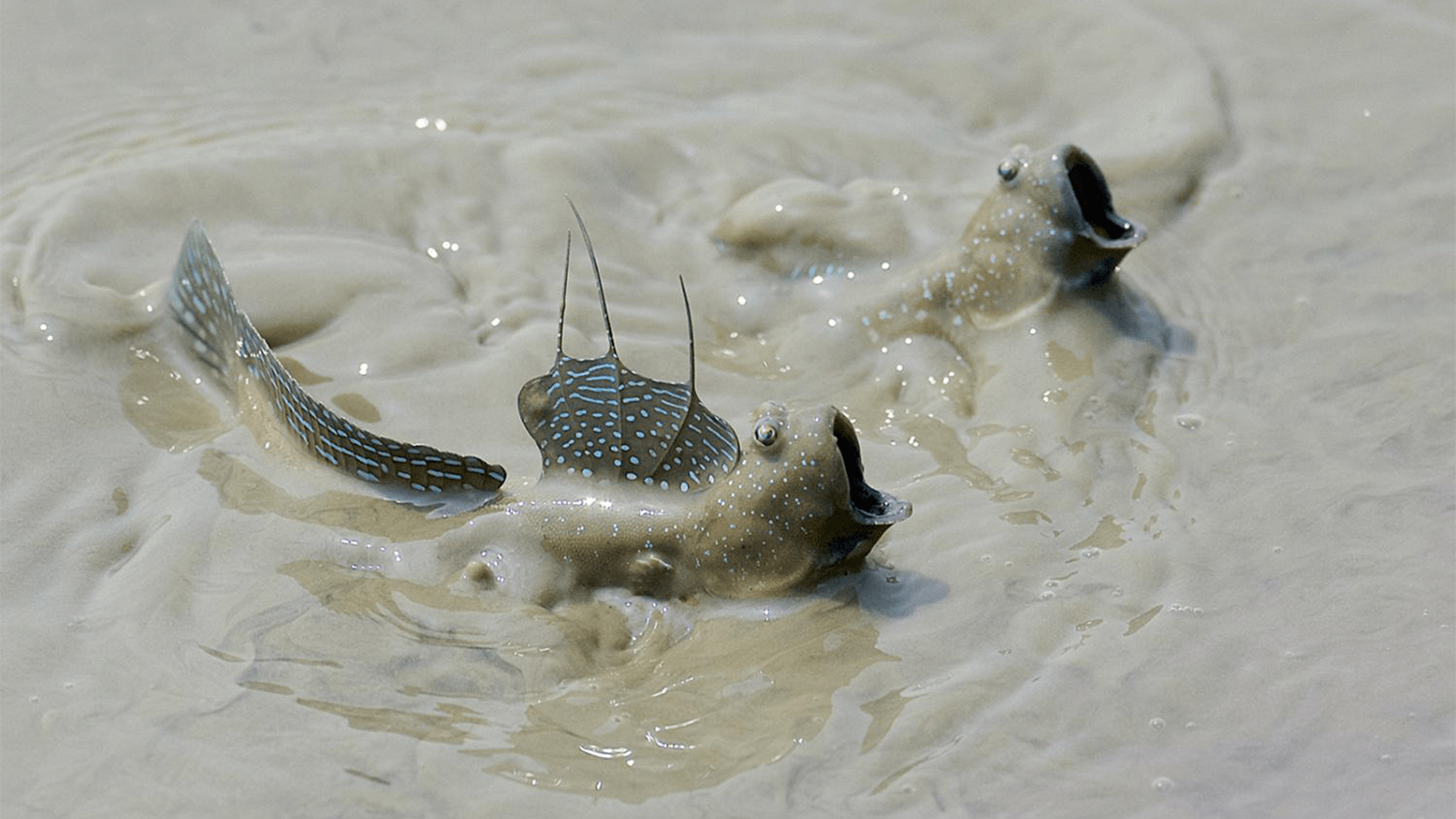

The unusual looking mudskipper has a startling face, and a fascinating backstory. The fish is actually amphibious and has evolved traits that ensure its survival in both water and on land. They have eyes on the top of their heads for better aerial vision and also use oxygen from their water stored in their gill chambers to breathe on land. However, the mudflat-dwelling fish’s ability to blink its eyes is shedding light on how our own ancestors evolved from living in the water to walking on land.
A study published April 24 in the Proceedings of the National Academy of Sciences (PNAS) found that the blinking behavior serves many of the same functions of our blinking, and it may be part of that suite of traits that allowed tetrapods to evolve on land. Tetrapods are the group of animals, including today’s amphibians, birds, reptiles and mammals, that evolved to exist on land in a rapid turn of events roughly 375 million years ago.
[Related: Our four-legged ancestors evolved from sea to land astonishingly quickly.]
Animals blink to keep the eyes wet and clean and protect them from injury. Sometimes, blinking can even be a form of communication. Humans and other tetrapods blink constantly through the day and despite it being a subtle action, it is quite complex. Strangely enough, mudskipper’s blink lasts roughly the same length of time as a human’s.
“Studying how this behavior first evolved has been challenging because the anatomical changes that allow blinking are mostly in soft tissues, which don’t preserve well in the fossil record,” co-autor and Penn State University biologist Thomas Stewart said in a statement. “The mudskipper, which evolved its blinking behavior independently, gives us the opportunity to test how and why blinking might have evolved in a living fish that regularly leaves the water to spend time on land.”
To better understand how mudskippers evolved the ability to blink, the team analyzed blinking using high-speed videos. They compared the mudskippers’ anatomy with a closely related water-bound fish that doesn’t blink. Mudskippers blink with eyes that bulge out of the top of their heads, similar to a frog’s eyes. They momentarily retract their eyes down into the sockets, when they are covered by a sketchy membrane called a dermal cup.

“Blinking in mudskippers appears to have evolved through a rearrangement of existing muscles that changed their line of action and also by the evolution of a novel tissue, the dermal cup,” co-author and Seton Hall University biologist Brett Aiello said in a statement. “This is a very interesting result because it shows that a very rudimentary, or basic, system can be used to conduct a complex behavior. You don’t need to evolve a lot of new stuff to evolve this new behavior — mudskippers just started using what they already had in a different way.”
To understand why the mudskippers blink on land, the team looked to the roles that blinking plays in other tetrapods. Tears in humans are critical to keeping the eye’s cells oxygenated and healthy, so the team looked to see if mudskippers blink to keep their eyes wet when exposed to the air.
[Related: Tiktaalik’s ancient cousin decided life was better in the water.]
“We found that, just like humans, mudskippers blink more frequently when confronted with dry eyes,” said Aiello. “What’s incredible is that they can use their blinks to wet the eyes, even though these fish haven’t evolved any tear glands or ducts. Whereas our tears are made by glands around our eyes and on our eyelids, mudskippers seem to be mixing mucus from the skin with water from their environment to produce a tear film.”
They also found that blinking in mudskippers is triggered to protect the eye from injury as well as clearing their eyes from possible debris. The finding suggests that mudskipper blinking appears to fulfill blinking’s three major functions—protecting, cleaning, and maintaining moisture.
“Based on the fact that mudskipper blinking, which evolved completely independently from our own fishy ancestors, serves many of the same functions as blinking in our own lineage, said Stewart. “We think that it was likely part of the suite of traits that evolved when tetrapods were adapting to live on land.”
